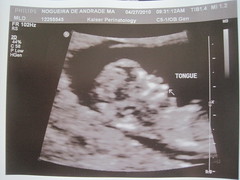 A lot has been going on in the last few months.
A lot has been going on in the last few months.
Mariana is 14 weeks pregnant, so we are expecting to have another kid by the beginning of November. She has just finished her studies and has found herself a job at EMQ/FamiliesFirst. She works counseling problematic children and loves it so far, but she has a terrible schedule, her shift is on weekend nights, so we don’t get to see each other much over the weekends.

So, now Nachito and I have plenty of time to spend together. Spring is here and in Davis the weather is great during this time of the year, so we are spending most of our time outdoors. We have been working in our garden again, Nachito helps me spread compost and plant the starts, he loves playing with worms.

We have also been exploring the surrounding parks: Berryessa, Cold Canyon, Cache Creek, Capay Valley and various sections of the South Yuba river. The rivers in the foothills are still a bit too cold for swimming, but the creeks in the North Coast Range are just perfect on a hot day. Nachito loves climbing on rocks and he’s getting increasingly good at it.

I keep swimming, not for rehabilitation anymore, but for recreation and fitness. I’m now in better shape than I’ve ever been and I feel pretty good about it. However, my back is not entirely healed yet; I cannot sit for long periods of time. I still feel a mild pain after driving long hours, biking on a rugged road or going to the movies. So, I keep working on stand-up desk. At this point it feels very natural, I don’t get tired as I used to anymore. Sitting on a chair feels too constraining, they remove too many degrees of freedom, it just feels wrong.
The Witness is progressing well, although on my side things are going a bit slower than I hoped. I need to get my shit together and use my time more effectively. Part of the problem is that I have too many distractions at home, so I’ve finally rented an office and I’ll be moving in tomorrow. For the first time in my life I won’t have a computer at home, I’m going to stay like that for a while, but I’ve been thinking I should probably get a laptop.




